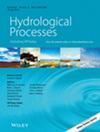Decoding the Hysteretic Behaviour of Hydraulic Variables in Lowland Rivers Using Multivariate Monitoring Approaches
Abstract
This paper demonstrates that the multivariate monitoring methods are capable to underpin the systematic investigation of the hysteretic behaviour occurring during gradually-varied flows. For this purpose, we present simultaneous measurements of stage, index velocity and free-surface slope acquired continuously with high-frequency sampling instruments deployed at several river gaging sites exposed to different storm magnitudes. The experimental evidence reveals intrinsic features of unsteady open-channel flow mechanics that are hinted by pertinent governing equations but rarely substantiated with in situ measurements. The illustrations are intentionally made for fluvial waves propagating in lowland rivers where the relationships among flow variables are most likely displaying hysteretic phasing in the progression of the hydraulic variables and loops in their relationships. The presented measurements highlight that: (a) the hysteretic behaviour is apparent in both time-independent and time-dependent graphical representations of any two of the hydraulic variables; (b) the severity of the hysteresis is commensurate with the geomorphic, hydraulic and hydrological characteristics of the measurement site; and (c) there are flow monitoring paradigms that can more accurately track changes of the flow variables during gradually-varied flows than those currently used in practice. Also discussed are research needs for advancing the understanding of the mechanisms underlying the movement and storage of water in the lowland river environments as well as for increasing the accuracy of streamflow monitoring, modelling and forecasting.

 求助内容:
求助内容: 应助结果提醒方式:
应助结果提醒方式:


